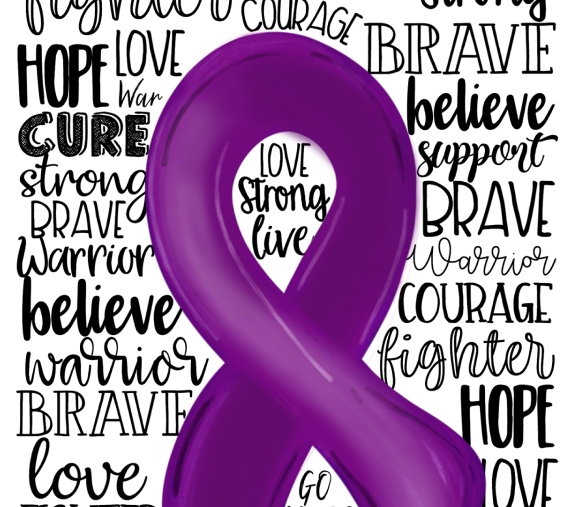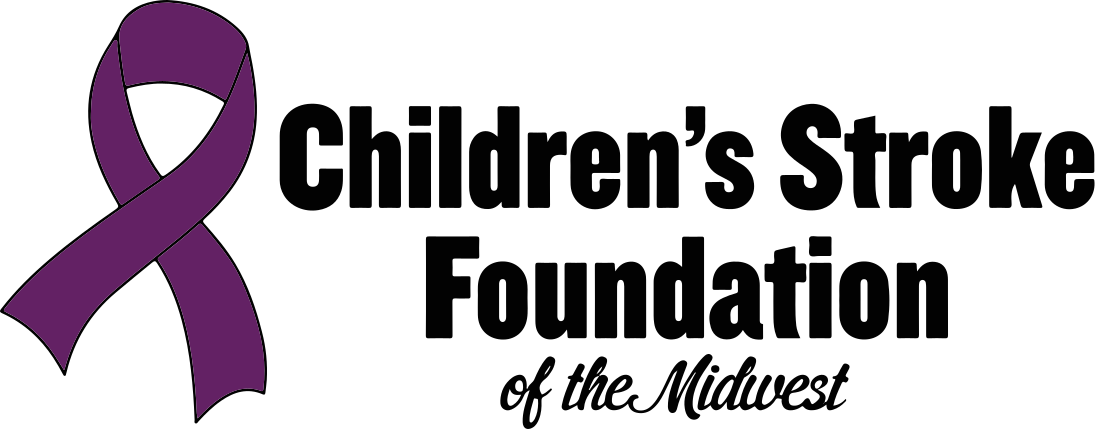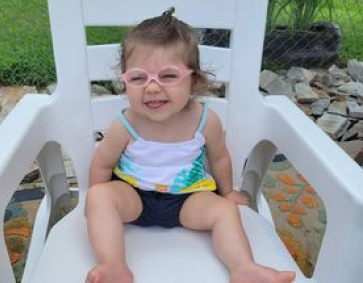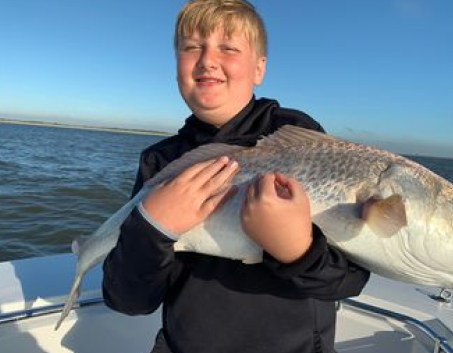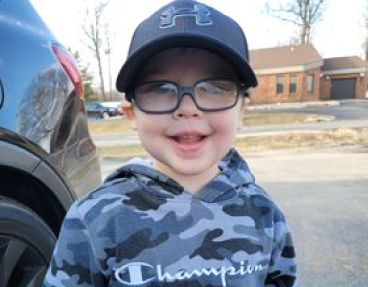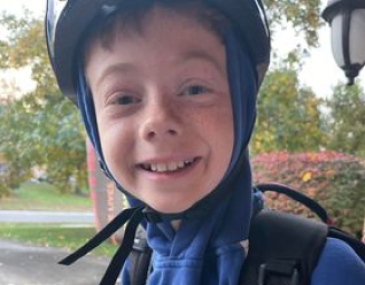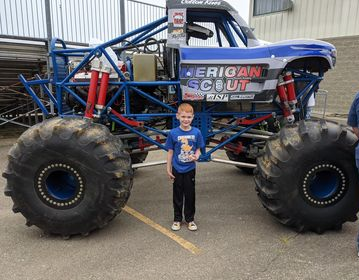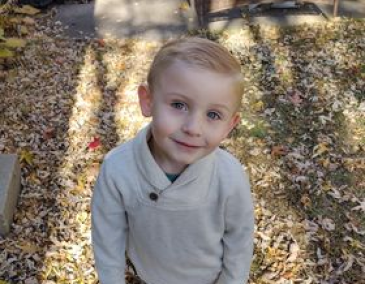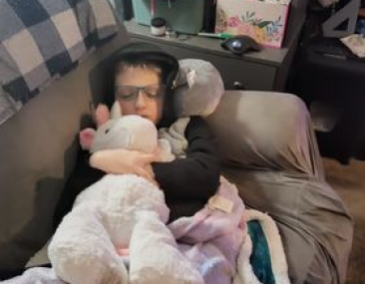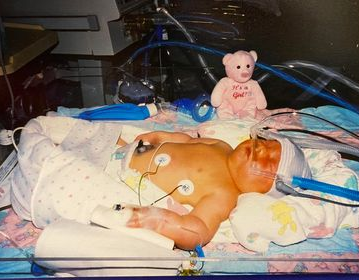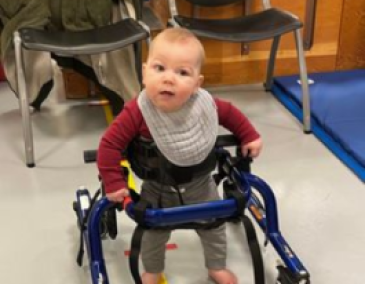Elijah suffered a Neonatal Acute Left Cerebral Stroke around the time of delivery, but we didn’t find out about it until he was 3 ½ months old.
During our time at the hospital after he was born, we had the usual specialists coming in and out to check on Elijah, and for the most part, everything was great and normal. Elijah’s left eye was not responding to the light tests, and he had torticollis with a lean to the left. We were told this was all likely due to his position during labor (he ended up being delivered via C-section after 32 hours of labor + 4 hours of pushing with no progress because he was posterior and lodged in the left side of my pelvis).
Once we left the hospital, we began appointments with ophthalmology for his eye and physical therapy for his torticollis. Elijah had hyphema in his left eye—which is typically caused by trauma (say like being lodged in my pelvis for hours while I was trying to push him out). We were prescribed steroid eye drops and dilating eye drops, and by our next appointment it had cleared up! We also started physical therapy to work on doing some stretches for the torticollis; these PT visits were video calls.
At Elijah’s 2-month checkup, his pediatrician recommended we see his physical therapist in person because the torticollis didn’t seem to be improving. At our first in-person visit with his physical therapist, she asked some clarifying questions—particularly about a noticeable left turn preference in his head and also with his eyes. She recommended taking Elijah to a neurologist to have him checked out. We thought for sure they wouldn’t find anything abnormal, but the neurologist wanted to do an MRI to check for evidence of a stroke. We honestly didn’t even know that was a possibility. The neurologist told us we shouldn’t see many, if any, cognitive delays due to the neuroplasticity of the brain, especially because Elijah is so young, and his brain is still developing. Physical therapy has now been focused on stroke recovery.
When Elijah was about 7 ½ months old, we started noticing something new. He would be doing something typical (playing, getting his diaper changed, relaxing, etc.), and his right arm would abruptly shoot out and his right hand would open. This would happen in clusters, so in one episode he would have about 5 of these “twitches” within a minute or two. They didn’t seem to bother him, but it kept happening. It almost looked like he was being startled, but there hadn’t been any loud noise or anything that would actually startle him. After about 2 weeks of noticing this, we decided to try to catch it on video to send to his doctors. His physical therapist through Early Intervention told us we should send the video to his neurologist. She said, “it could be nothing, but it could be seizure activity”. His neurologist ordered an EEG for us to go in to have it checked out, and sure enough—they found “abnormal activity”. Elijah was having Infantile Spasms. The neurologist explained we would start Elijah on a heavy dose of steroids for 2 weeks and then go to the hospital for an overnight, 24-hour EEG to see if there was improvement. This steroid treatment has about a 50% success rate, which didn’t leave us feeling too optimistic.
The week we went in for the overnight EEG, we hadn’t seen any spasms for 4 days in a row. We were very CAUTIOUSLY optimistic. After Elijah had been hooked up with all the wires for a couple hours, the neurologist came into our room and told us things were looking really good so far. They didn’t see any of the activity they had seen on the previous EEG, but we would have to wait until the next morning to know for sure. The next morning, they came in and told us there was no hypsarrhythmia, no evidence of spasms, and no clinical events!!!!!!! We could seriously feel a huge weight lifted almost immediately. We couldn’t believe the treatment worked!
At our follow-up appointment with the neurologist, he prescribed an anticonvulsant that Elijah would be on for the next year or two. Because of the stroke, he is at a higher risk for seizures (especially since he already had the infantile spasms), so we were really relieved to know he’d be on the new medication because we didn’t want to take any chances.
Elijah has a “Visual Field Defect”—meaning the right side of both eyes basically has a blind spot which affects his peripheral vision. We won’t know the severity of it until he is older though.
We have seen some motor delays due to the right-sided weakness, but we continue Physical Therapy appointments every other week and practice daily what we learn at those appointments. We just finished a 6-week CIMT program (Constraint Induced Movement Therapy)—which showed awesome improvements with Elijah’s right hand/arm.
We are beyond thankful for our sweet Elijah and so proud of how far he’s come, and we will continue to do whatever it takes to help him continue to grow and thrive. No matter what his future holds, he will be surrounded by people who love and support him.
